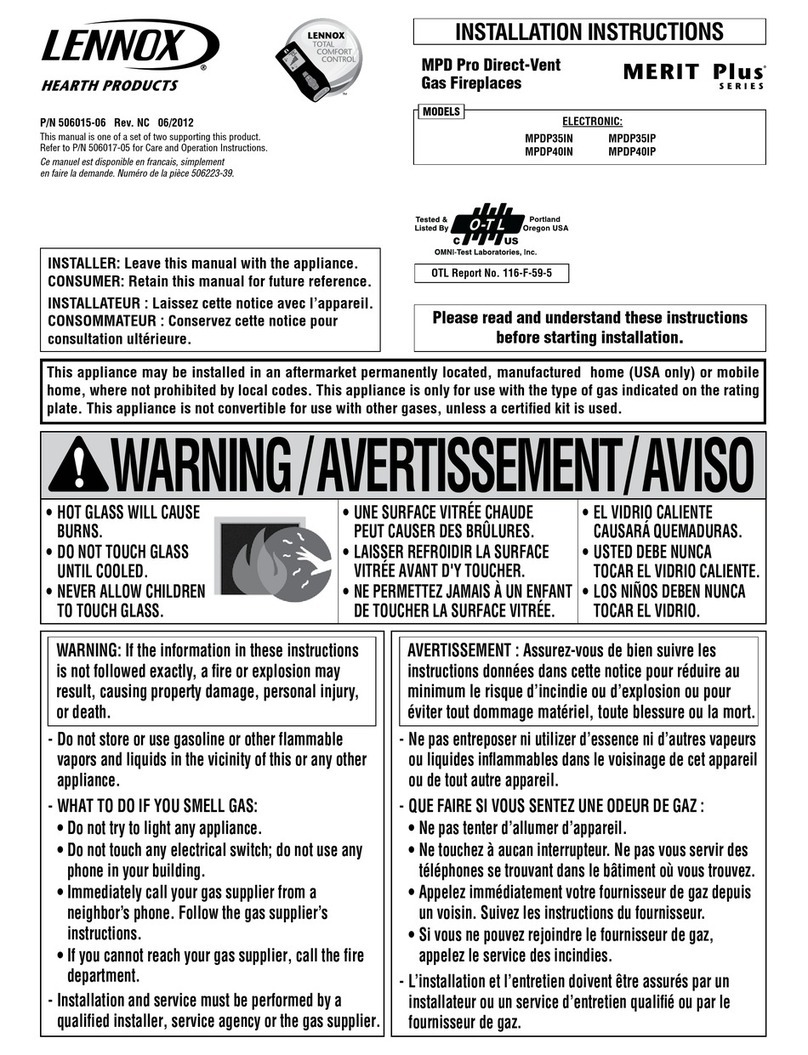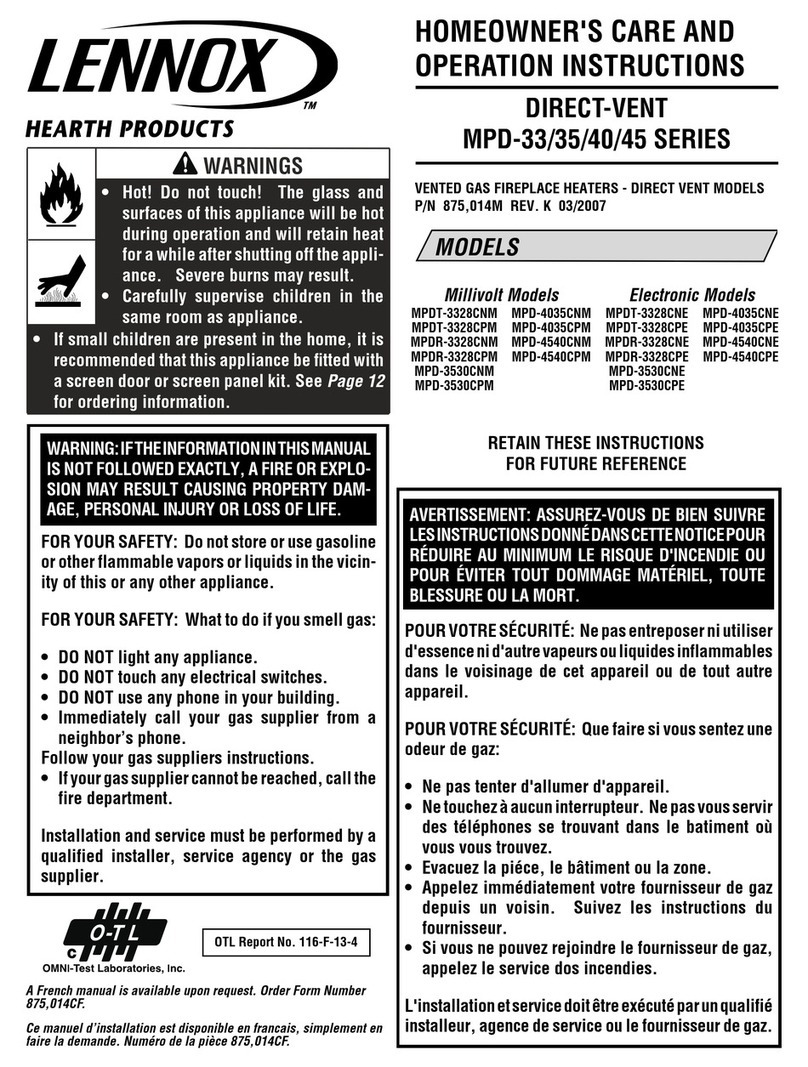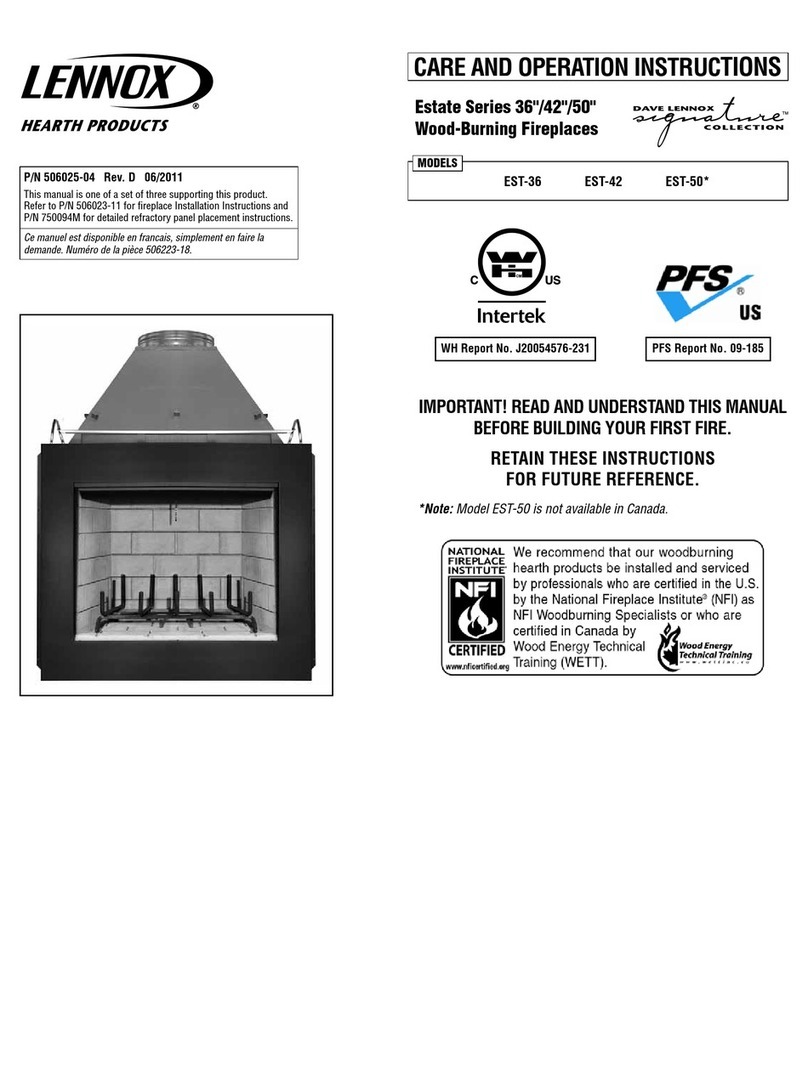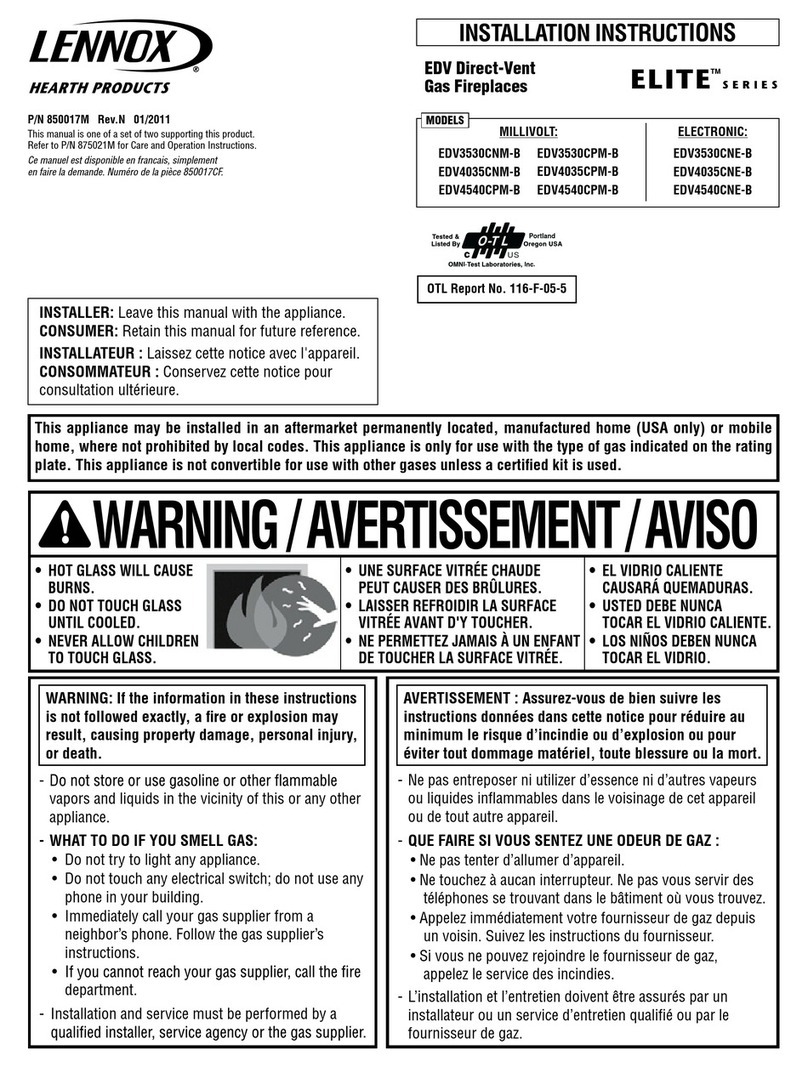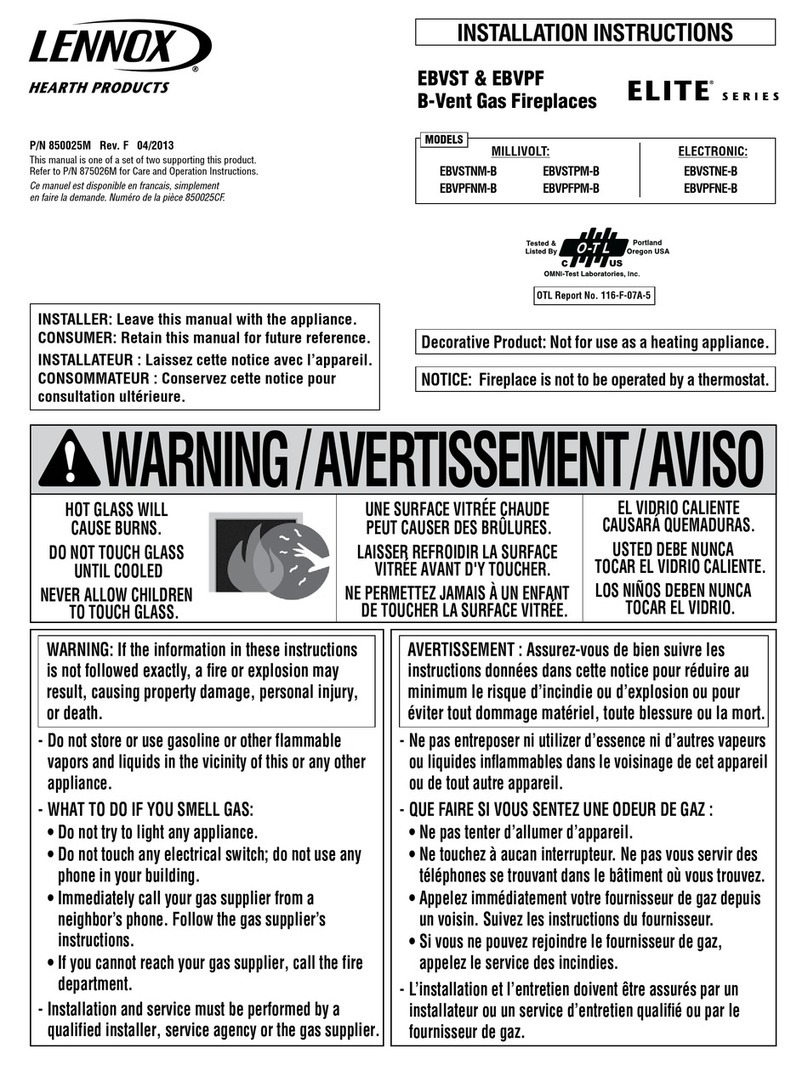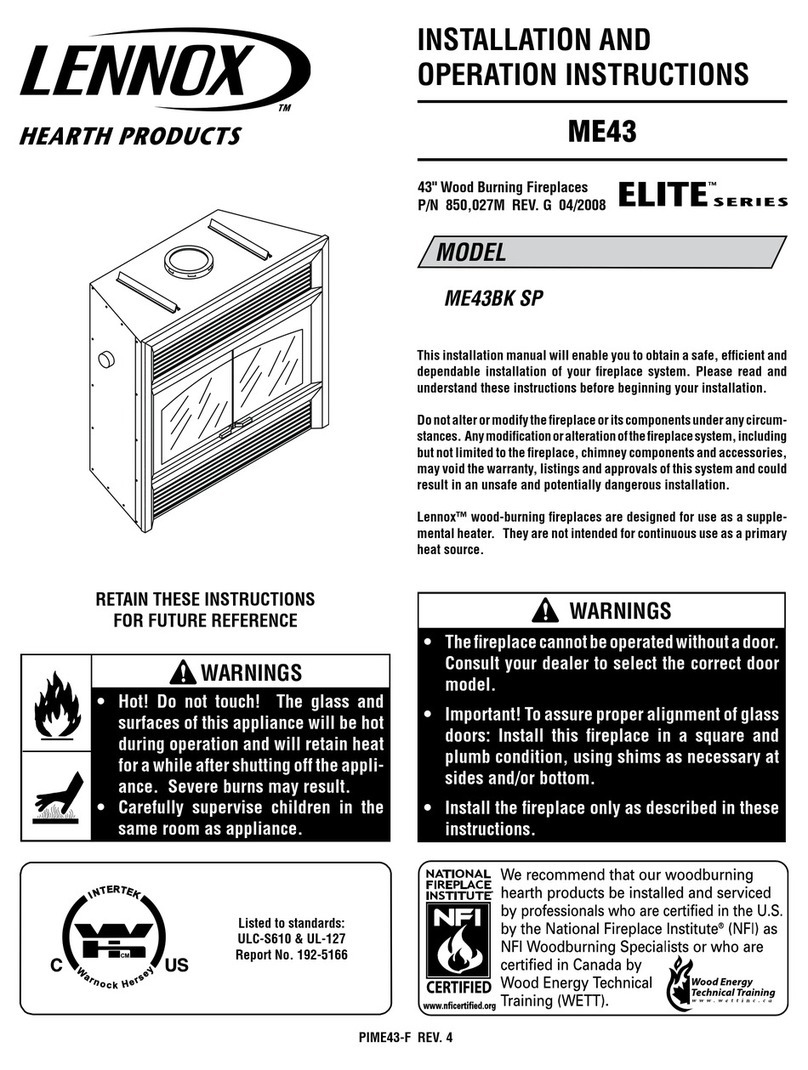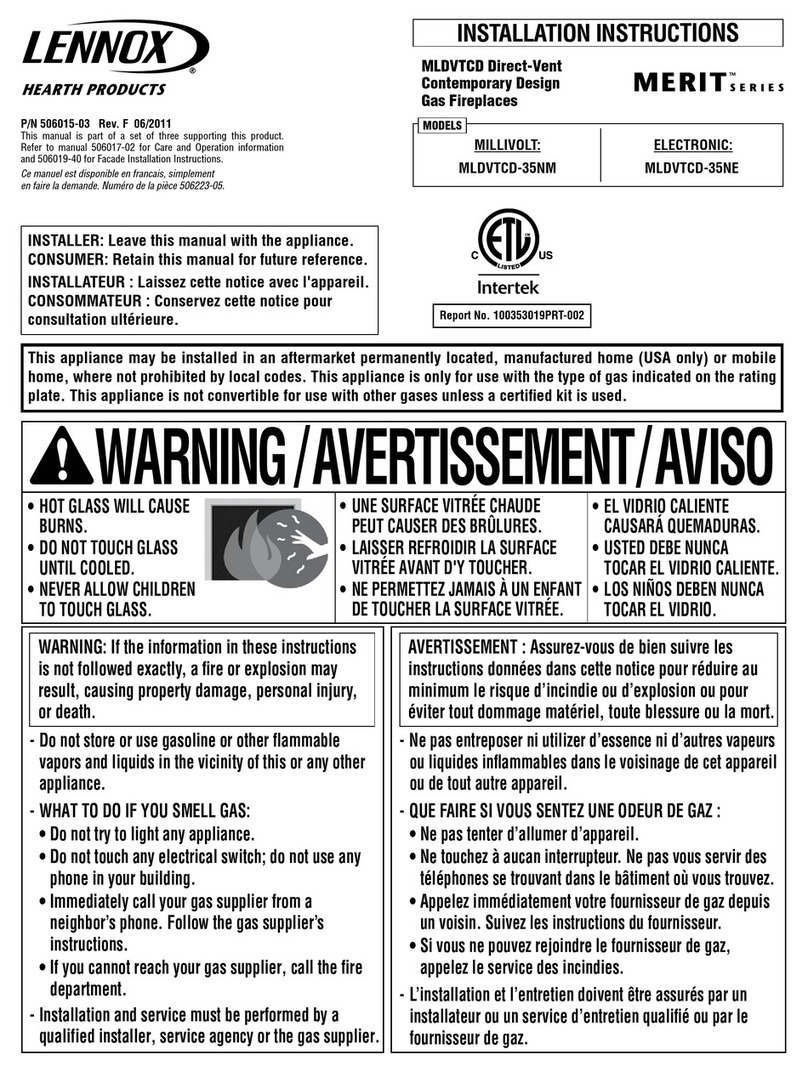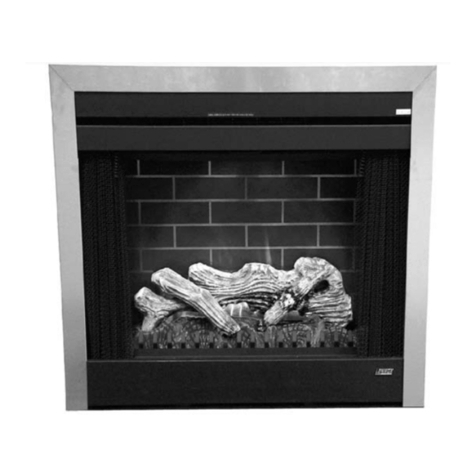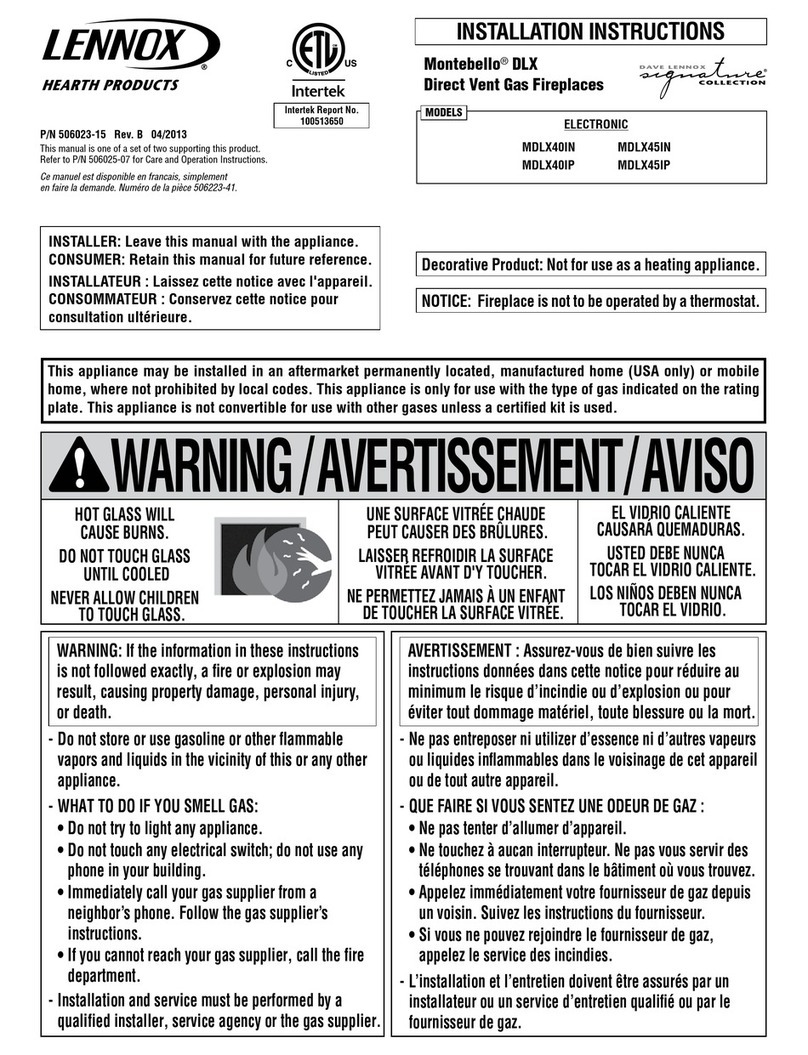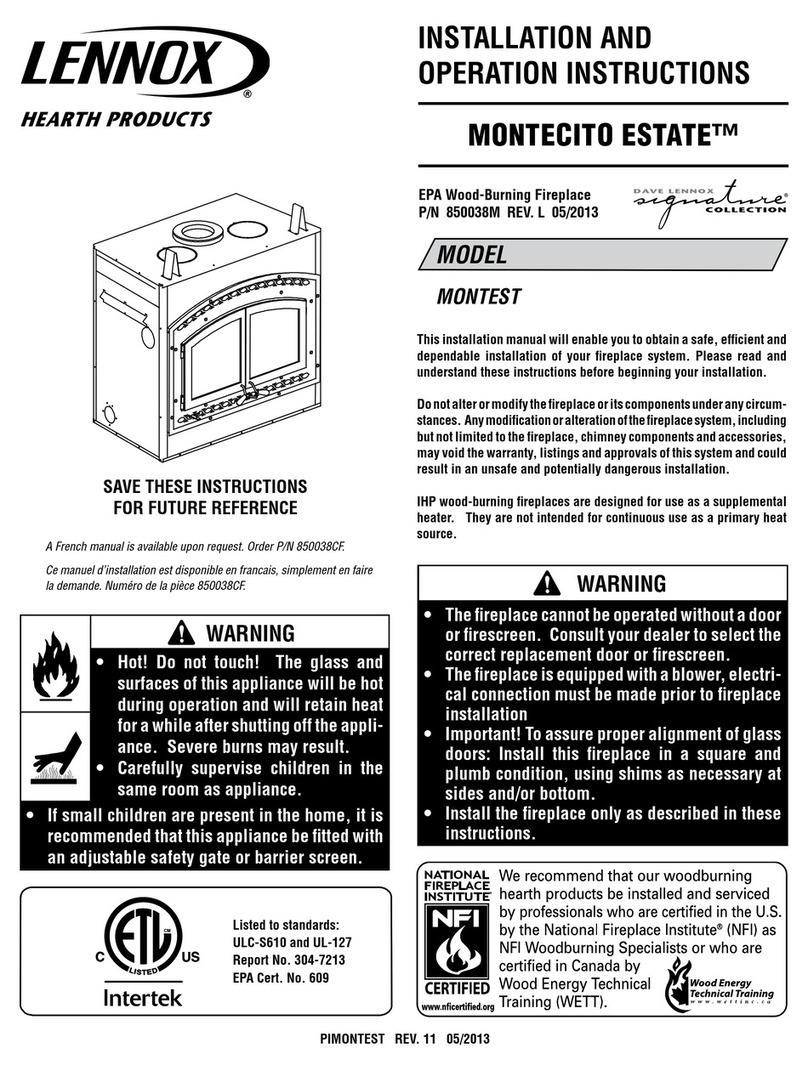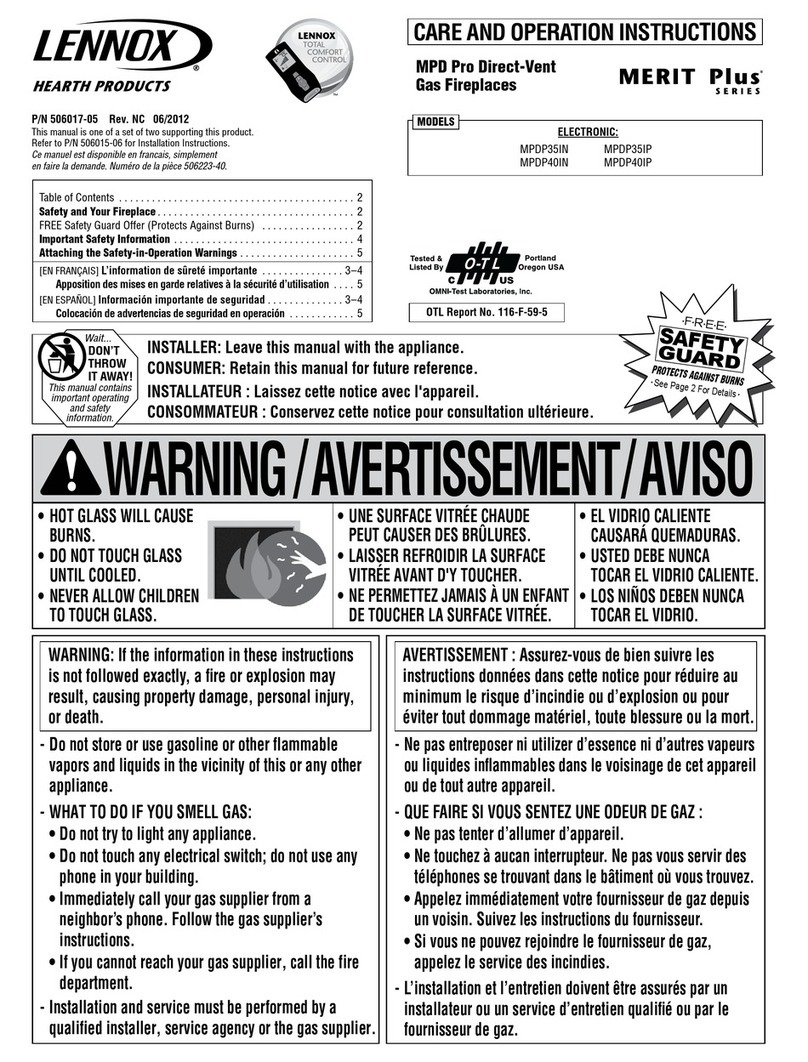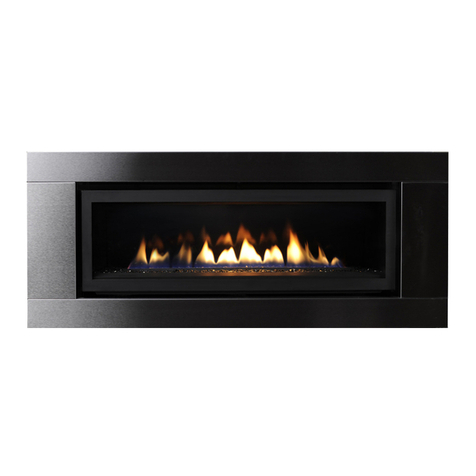
NOTE: DIAGRAMS & ILLUSTRATIONS NOT TO SCALE. 3
htiwsledoMtlovilliM evlaVsaGdetaludoM-yllaunaM saGlarutaNsaGenaporP
.oNledoM tupnI etar )H/UTB( .oNledoM tupnI etar )H/UTB(
DLEV53000,72 ot 000,12 DLEV53000,62 ot 000,02
04VDLE 000,92 ot 000,32 04VDLE 000,72 ot 000,22
DLEV54000,03 ot 000,32 DLEV54000,82 ot 000,12
ledoM .oN ezisecifirO noitavelE teeF )sretem(
.taN.porP
53VDLE 83#35# 0054-0 )2731-0(
04VDLE 73#"260.0
54VDLE 63#"560.0
evlaVsaGlarutaNhtiwsledoMcinortcelE .oNledoM)H/UTB(etartupnI
LE53VD000,12ot000,72
04VDLE000,32ot000,92
54VDLE000,32ot000,03
Table 1
Test gage connections are provided on the
front of the millivolt and electronic gas control
valve(identifiedINfortheinletandOUTforthe
manifold side). A 1/8" NPT test gage connec-
tion is provided at the inlet and outlet side of
the electronic gas control valve.
Minimum inlet gas pressure to these appli-
ances is 5.0 inches water column (1.24 kPa)
for natural gas and 11 inches water column
(2.74kPa)forpropaneforthepurposeofinput
adjustment.
Maximum inlet gas supply pressure to these
appliances is 10.5 inches water column (2.61
kPa) for natural gas and 13.0 inches water
column (3.23 kPa) for propane.
These appliances must be isolated from the
gas supply piping system (by closing their
individual manual shut-off valve) during any
pressure testing of the gas supply piping
systemattestpressuresequaltoorlessthan
1/2 psig (3.5 kPa).
Themillivoltappliancesaremanuallycontrolled
andfeatureasparkignitor(piezo)thatallowsthe
appliance's pilot gas to be lit without the use of
matches or batteries. This system provides
continuedserviceintheeventofapoweroutage.
Donotusetheseappliancesifanyparthasbeen
underwater. Immediately call a qualified, pro-
fessional service technician to inspect the ap-
pliance and to replace any parts of the control
system and any gas control which have been
under water.
Ne pas se servir de cet appareil s'il a étéplongé
dansl'eau,complètementouen partie. Appeler
untechnicienqualifiépourinspecterl'appareilet
remplacertoutepartiedusystèmedecontrôleet
toutecommandequiontétéplongésdansl'eau.
This appliance may be installed in an af-
termarket permanently located, manufac-
tured home (USA only) or mobile home,
where not prohibited by local codes. This
appliance is only for use with the type of
gas indicated on the rating plate. This ap-
pliance is not convertible for use with other
gases, unless a certified kit is used.
Cet appareil peut être installé dans un
maison préfabriquée (É.-U. seulement)
ou mobile déjà installée à demeure si
les réglements locaux le permettent.
Cetappareildoitêtreutiliséuniquement
avec les types de gaz indiqués sur la
plaque signalétique. Ne pas l'utiliser
avec d'autres gaz sauf si un kit de con-
version certifié est installé.
Installations at Altitudes of 0 to 4500 ft.-
Unitsaretestedandapprovedforelevations
of 0 to 4500 feet (0 to 1372 meters).
Installations at Altitudes above 4500 ft.-
For elevations above 4500 feet (1372
meters), install the unit according to the
regulations of the local authorities having
jurisdictionand,intheUSA,thelatestedition
oftheNationalFuelGasCode(ANSIZ223.1)
or, in Canada, the latest edition of the
CAN1-B149.1and.2 codes.
Theseappliances and their individual shut-off
valves must be disconnected from the gas
supply piping system during any pressure
testingofthatsystematpressuresinexcessof
1/2 psig (3.5 kPa).
Theseappliances must not be connected to a
chimney or flue serving a separate solid fuel
burning appliance.
These heater rated appliances are intended
for use as supplemental heaters only.
Carbon Monoxide Poisoning: Early signs of
carbon monoxide poisoning are similar to
the flu with headaches, dizziness and/or
nausea.Ifyouhavethesesigns,obtainfresh
air immediately. Turn off the gas supply to
the appliance and have it serviced by a
qualified professional, as it may not be op-
erating correctly.
Electronic Models -
Electronic models have a manually modulated
gasvalve. Inputof electronicmodelsisshown
in the following table:
Millivolt Models -
Millivolt models come standard with the manu-
ally-modulatedgasvalve;flameappearanceand
heat output can be controlled at the gas valve.
Inputofmillivoltmodelsisshowninthefollow-
ing table:
All Models -
Maximum manifold pressure is 3.5 in. w.c.
(0.87 kPa) for natural gas and 10 in. w.c.
(2.49 kPa) for LP/Propane gas.
WARNING: FAILURE TO COMPLY WITH
THEINSTALLATIONANDOPERATINGIN-
STRUCTIONSPROVIDEDINTHISDOCU-
MENT WILL RESULT IN AN IMPROP-
ERLY INSTALLED AND OPERATING AP-
PLIANCE, VOIDING ITS WARRANTY.
ANYCHANGETOTHISAPPLIANCEAND/
ORITSOPERATING CONTROLS IS DAN-
GEROUS. IMPROPER INSTALLATION
ORUSEOFTHISAPPLIANCECANCAUSE
SERIOUSINJURYORDEATHFROMFIRE,
BURNS,EXPLOSION OR CARBON MON-
OXIDE POISONING.
WARNING: CHILDREN AND ADULTS
SHOULDBE ALERTEDTOTHEHAZARDS
OFHIGHSURFACETEMPERATURES.USE
CAUTION AROUND THE APPLIANCE TO
AVOID BURNS OR CLOTHING IGNITION.
YOUNG CHILDREN SHOULD BE CARE-
FULLYSUPERVISEDWHENTHEYAREIN
THE SAME ROOM AS THE APPLIANCE.
WARNING: DO NOT PLACE CLOTHING
OR OTHER FLAMMABLE MATERIALS
ON OR NEAR THIS APPLIANCE.
AVERTISSEMENT: SURVEILLER LES
ENFANTS. GARDER LES VÊTEMENTS,
LES MEUBLES, L'ESSENCE OU AUTRES
LIQUIDESÀ VAPEURINFLAMMABLES À
COTE DE L'APPAREIL.
Table1
showstheunits'gasorificesizefor
theelevationsindicated.


